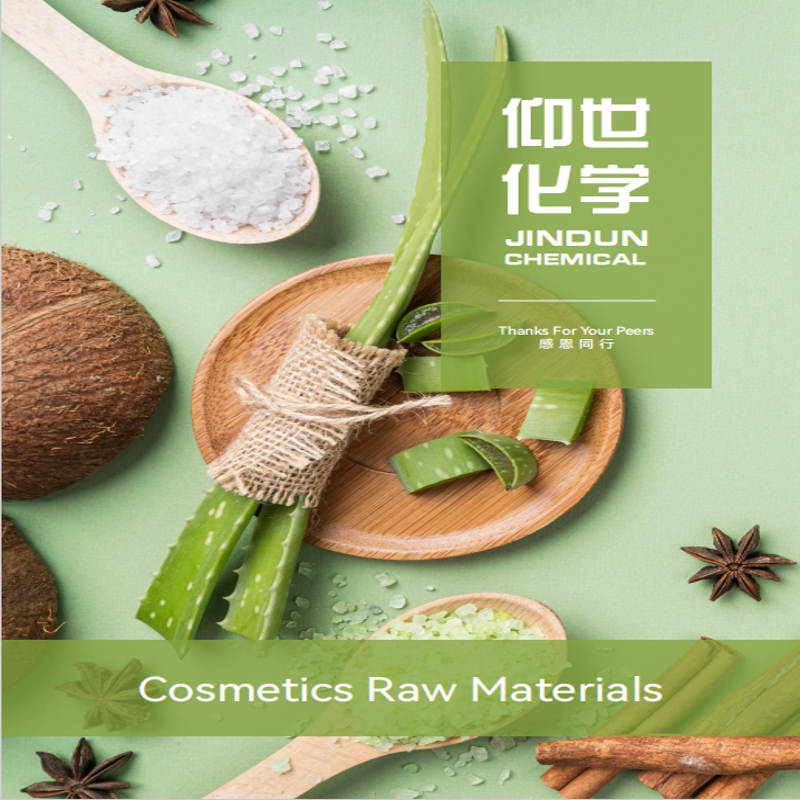-
Categories
-
Pharmaceutical Intermediates
-
Active Pharmaceutical Ingredients
-
Food Additives
- Industrial Coatings
- Agrochemicals
- Dyes and Pigments
- Surfactant
- Flavors and Fragrances
- Chemical Reagents
- Catalyst and Auxiliary
- Natural Products
- Inorganic Chemistry
-
Organic Chemistry
-
Biochemical Engineering
- Analytical Chemistry
- Cosmetic Ingredient
-
Pharmaceutical Intermediates
Promotion
ECHEMI Mall
Wholesale
Weekly Price
Exhibition
News
-
Trade Service
In June 2016, the European Commission formally published this draft standard, detailing how to identify substances with endocrine disrupting properties, and incorporated the standard into the plant protection product and biocide product regulations
.
The standard has been controversial after its introduction.
Despite the amendments made in November 2016, there are still differences of opinion among the member states of the EU Standing Committee on Animals, Plants, Food and Feed (PAFF)
.
In December 2016, the European Commission submitted an amendment to the third edition, which divided the plant protection product regulations into two, one describing the identification standards, and the other indicating the potential hazards of the product, allowing the EU member states and the European Parliament to submit their opinions
.
However, after some intense discussions, the amendment was eventually rejected by a majority of votes
.
A recent hot news "The European Commission once again initiated a public vote on the endocrine disruptor (EDC) identification standard" has attracted the attention of the global agrochemical industry
.
From the current point of view, Europe is still unable to determine how to resolve the EDC issue, and why is this issue so controversial? Initially, in view of the gradual realization that certain chemicals may have an impact on human health and the environment, the European Commission decided to issue a scientific identification standard for EDC, including the Plant Protection Product Regulation (PPPR) and the Biocide Product Regulation (BPR)
.
In late February 2017, the European Commission met with relevant experts and member states to discuss the latest version of the EDC appraisal standard.
This time, the PAFF Standing Committee was not required to make a formal vote
.
why? Is it because it is worried that most member states will still oppose it? Indeed, only 11 member states are rumored to approve the proposal, and the remaining 16 either abstained or opposed it
.
In the end, the meeting did not reach a conclusion, indicating that the experts still have doubts about the proposal, or whether they have doubts about the European Commission's approach to the EDC issue
.
The proponents of the proposal firmly believe that the problem lies in the wording and believe that only a small text adjustment can resolve the dispute.
This argument was immediately rejected by several consumer groups, politicians and NGOs in Europe
.
The opposition to the proposal is mainly focused on the European Commission’s guidelines for the exemption and authorization of EDC products.
.
According to current regulations, plant protection products with endocrine disrupting properties can only be sold if they have negligible contact with the human body or non-target organisms in actual applications; while biocide products with endocrine disrupting properties can only be sold at risk It can be ignored or only when it is used as a key prevention and control method to eliminate major threats to humans, animals and the environment
.
In addition, if compared with the product's use risk, if the use of the product is not approved and will cause more serious harm to the society, an exemption authorization can be implemented
.
In this amendment, the European Commission changed the exemption conditions in the draft plant protection and biocide products from "negligible" to "no adverse effects"
.
At the same time, if there is evidence that the side effects of an EDC product will not affect the human body or non-target biological populations, it should still be approved
.
In addition, this prohibition standard based on product hazards will no longer be applicable to growth regulators with endocrine disrupting mechanisms
.
So the question boils down to how to interpret this proposal of the European Commission
.
Non-governmental organizations generally believe that the proposed exemption policy will allow endocrine disrupting pesticides to be widely used, which is not in line with the original intention of the legislation
.
Not only that, only plant protection products and biocide products are considered in the proposal, and other products are not mentioned.
It is very difficult to clearly prove that a substance belongs to EDC.
Therefore, it is not difficult to understand why many EU member states require that the proposal be made.
Modifications and clarifications
.
In 2013, the European Food Safety Agency (EFSA) issued a scientific opinion on the hazard assessment of endocrine disruptors
.
Different from the current plant protection and biocide product regulations that blindly emphasize the hazards of EDC itself and prohibit the concept, the article quoted expert opinions and expressed it as: "The risk assessment ability of considering both product hazards and actual/predicted exposure data of organisms Make best use of available information to make fair judgments
.
Therefore, EDC can be treated the same as most other substances that are suspected of being harmful to humans and the environment, such as risk assessment, not just hazard assessment" (EFSA, year 2013)
.
Then in February 2016, the Society of Environmental Toxicology and Chemistry (SETAC) jointly organized the EHRA Pellston seminar with 48 internationally renowned experts.
The result of the discussion was that if EDC's environmental exposure and impact data are sufficient and credible, then its risk The evaluation result is scientific and reliable (Leopold et al.
, 2017), which coincides with the current endocrine disruptor regulations in the United States and Japan, and further complicates the problem
.
In April 2017, experts from the competent authorities of the EU member states held a follow-up discussion meeting where only the proposals for growth regulators in the biocide regulations were discussed
.
It is not difficult to see that the EDC legislative road is still long and arduous, and requires a little bit of experimentation and change
.
So what's next? This is a big problem because the European Commission has not yet put the discussion of plant protection product regulations on the agenda
.
Most of the growth regulators with endocrine disrupting mechanism are very low in toxicity and are often used in integrated pest management.
Some are even approved for use in organic agriculture.
They can be degraded in the natural environment without endangering the human body or the environment, so some The opinion believes that its adverse effects should be accepted without banning
.
Another key issue is the term "adverse effects" in the definition of endocrine disruptor properties
.
EDC has three recognized standard definitions: i) adversely affect the intact (non-target) organism or its offspring; ii) have an endocrine disrupting mechanism; iii) there is a reasonable causal relationship between endocrine disrupting activities and adverse effects
.
There are many questions arising from this definition, such as what is an adverse effect, and what exactly is it? How to prove that there is a reasonable causal relationship between endocrine disrupting activities and adverse effects? In recent years, scientists and regulatory agencies from various countries have worked hard to formulate scientific identification standards and regulatory regulations related to EDC
.
In December 2016, at the request of the European Commission, the European Chemicals Agency (ECHA), the European Food Safety Agency (EFSA), and the Joint Research Center (JRC) jointly published a report titled "How to Implement Endocrine Disruptor Hazards" Outline of the Draft Guidance Document for Appraisal
.
This guidance document will focus on the data and information needed to identify endocrine mechanisms and how to determine whether endocrine disrupting activities will adversely affect intact organisms
.
The outline lists the detailed guidance document preparation plan, including catalog, timetable, assignment of responsibilities, negotiation plan with related parties, and approval procedures for final documents, etc.
, giving people a general idea of the guidance document
.
The drafting of the guidance document of the ECHA-EFSA-JRC joint group is expected to continue until May 2017, and the public consultation will begin in June 2017
.
.
The standard has been controversial after its introduction.
Despite the amendments made in November 2016, there are still differences of opinion among the member states of the EU Standing Committee on Animals, Plants, Food and Feed (PAFF)
.
In December 2016, the European Commission submitted an amendment to the third edition, which divided the plant protection product regulations into two, one describing the identification standards, and the other indicating the potential hazards of the product, allowing the EU member states and the European Parliament to submit their opinions
.
However, after some intense discussions, the amendment was eventually rejected by a majority of votes
.
A recent hot news "The European Commission once again initiated a public vote on the endocrine disruptor (EDC) identification standard" has attracted the attention of the global agrochemical industry
.
From the current point of view, Europe is still unable to determine how to resolve the EDC issue, and why is this issue so controversial? Initially, in view of the gradual realization that certain chemicals may have an impact on human health and the environment, the European Commission decided to issue a scientific identification standard for EDC, including the Plant Protection Product Regulation (PPPR) and the Biocide Product Regulation (BPR)
.
In late February 2017, the European Commission met with relevant experts and member states to discuss the latest version of the EDC appraisal standard.
This time, the PAFF Standing Committee was not required to make a formal vote
.
why? Is it because it is worried that most member states will still oppose it? Indeed, only 11 member states are rumored to approve the proposal, and the remaining 16 either abstained or opposed it
.
In the end, the meeting did not reach a conclusion, indicating that the experts still have doubts about the proposal, or whether they have doubts about the European Commission's approach to the EDC issue
.
The proponents of the proposal firmly believe that the problem lies in the wording and believe that only a small text adjustment can resolve the dispute.
This argument was immediately rejected by several consumer groups, politicians and NGOs in Europe
.
The opposition to the proposal is mainly focused on the European Commission’s guidelines for the exemption and authorization of EDC products.
.
According to current regulations, plant protection products with endocrine disrupting properties can only be sold if they have negligible contact with the human body or non-target organisms in actual applications; while biocide products with endocrine disrupting properties can only be sold at risk It can be ignored or only when it is used as a key prevention and control method to eliminate major threats to humans, animals and the environment
.
In addition, if compared with the product's use risk, if the use of the product is not approved and will cause more serious harm to the society, an exemption authorization can be implemented
.
In this amendment, the European Commission changed the exemption conditions in the draft plant protection and biocide products from "negligible" to "no adverse effects"
.
At the same time, if there is evidence that the side effects of an EDC product will not affect the human body or non-target biological populations, it should still be approved
.
In addition, this prohibition standard based on product hazards will no longer be applicable to growth regulators with endocrine disrupting mechanisms
.
So the question boils down to how to interpret this proposal of the European Commission
.
Non-governmental organizations generally believe that the proposed exemption policy will allow endocrine disrupting pesticides to be widely used, which is not in line with the original intention of the legislation
.
Not only that, only plant protection products and biocide products are considered in the proposal, and other products are not mentioned.
It is very difficult to clearly prove that a substance belongs to EDC.
Therefore, it is not difficult to understand why many EU member states require that the proposal be made.
Modifications and clarifications
.
In 2013, the European Food Safety Agency (EFSA) issued a scientific opinion on the hazard assessment of endocrine disruptors
.
Different from the current plant protection and biocide product regulations that blindly emphasize the hazards of EDC itself and prohibit the concept, the article quoted expert opinions and expressed it as: "The risk assessment ability of considering both product hazards and actual/predicted exposure data of organisms Make best use of available information to make fair judgments
.
Therefore, EDC can be treated the same as most other substances that are suspected of being harmful to humans and the environment, such as risk assessment, not just hazard assessment" (EFSA, year 2013)
.
Then in February 2016, the Society of Environmental Toxicology and Chemistry (SETAC) jointly organized the EHRA Pellston seminar with 48 internationally renowned experts.
The result of the discussion was that if EDC's environmental exposure and impact data are sufficient and credible, then its risk The evaluation result is scientific and reliable (Leopold et al.
, 2017), which coincides with the current endocrine disruptor regulations in the United States and Japan, and further complicates the problem
.
In April 2017, experts from the competent authorities of the EU member states held a follow-up discussion meeting where only the proposals for growth regulators in the biocide regulations were discussed
.
It is not difficult to see that the EDC legislative road is still long and arduous, and requires a little bit of experimentation and change
.
So what's next? This is a big problem because the European Commission has not yet put the discussion of plant protection product regulations on the agenda
.
Most of the growth regulators with endocrine disrupting mechanism are very low in toxicity and are often used in integrated pest management.
Some are even approved for use in organic agriculture.
They can be degraded in the natural environment without endangering the human body or the environment, so some The opinion believes that its adverse effects should be accepted without banning
.
Another key issue is the term "adverse effects" in the definition of endocrine disruptor properties
.
EDC has three recognized standard definitions: i) adversely affect the intact (non-target) organism or its offspring; ii) have an endocrine disrupting mechanism; iii) there is a reasonable causal relationship between endocrine disrupting activities and adverse effects
.
There are many questions arising from this definition, such as what is an adverse effect, and what exactly is it? How to prove that there is a reasonable causal relationship between endocrine disrupting activities and adverse effects? In recent years, scientists and regulatory agencies from various countries have worked hard to formulate scientific identification standards and regulatory regulations related to EDC
.
In December 2016, at the request of the European Commission, the European Chemicals Agency (ECHA), the European Food Safety Agency (EFSA), and the Joint Research Center (JRC) jointly published a report titled "How to Implement Endocrine Disruptor Hazards" Outline of the Draft Guidance Document for Appraisal
.
This guidance document will focus on the data and information needed to identify endocrine mechanisms and how to determine whether endocrine disrupting activities will adversely affect intact organisms
.
The outline lists the detailed guidance document preparation plan, including catalog, timetable, assignment of responsibilities, negotiation plan with related parties, and approval procedures for final documents, etc.
, giving people a general idea of the guidance document
.
The drafting of the guidance document of the ECHA-EFSA-JRC joint group is expected to continue until May 2017, and the public consultation will begin in June 2017
.







